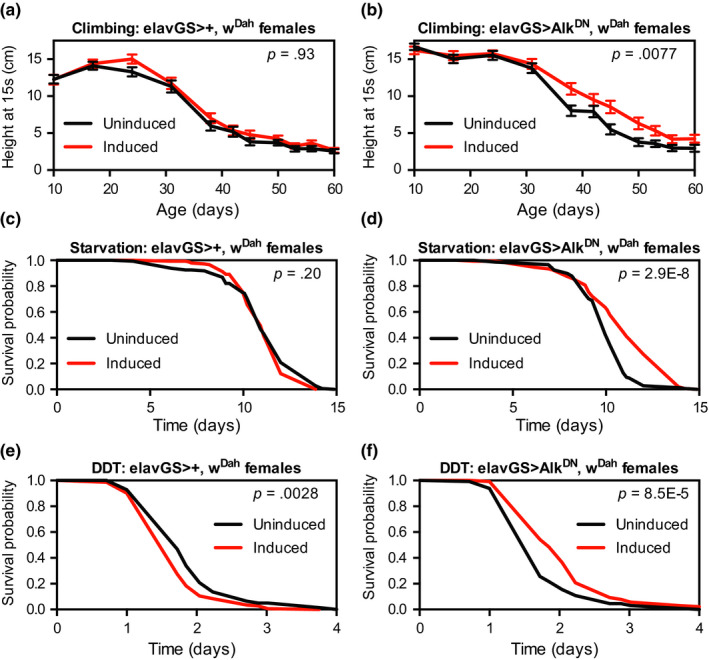Figure 4.

Expression of dominant‐negative Alk in neurons improves climbing ability, resistance to starvation, and resistance to the xenobiotic toxin DDT. (a, b) The slope of age‐related decline in climbing ability was (a) not significantly changed for female wDah;;elav‐ GS301/+ flies and (b) significantly improved for female wDah;;UAS‐AlkDN/elav‐GS301 flies treated with RU‐486 (200 μM) from 2 days of age compared to sibling flies of the same genotype treated with vehicle control food. Values shown are mean ± SEM from n > 45 individual flies for each condition and age; p values are from slope comparisons in a linear regression analysis. (c, d) Survival curves in starvation experiments started at 14 days of age showed (c) no significant change in survival for female wDah;;elav‐GS301/+ flies and (d) significantly improved survival for female wDah;;UAS‐AlkDN/elav‐GS301 flies treated with RU‐486 (200 μM) from 2 days of age compared to sibling flies of the same genotype treated with vehicle control food. (e, f) Survival curves in DDT (0.03%) experiments started at 14 days of age showed (c) significantly decreased survival for female wDah;;elav‐GS301/+ flies and (d) significantly improved survival for female wDah;;UAS‐AlkDN/elav‐GS301 flies treated with RU‐486 (200 μM) from 2 days of age compared to sibling flies of the same genotype treated with vehicle control food. For all survival experiments, n > 140 deaths counted per condition; p values are from log‐rank tests vs. the vehicle‐treated (uninduced) group
